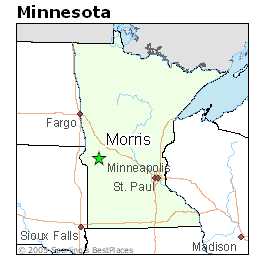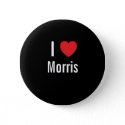Rolling the dice is something I normally associate with a gang that shows up at Don's Cafe most mornings. Bill Dripps is a "regular." I'm not a daily patron anymore but I assume the ritual lives. I would sometimes flinch, such was the force with which these guys slammed the dice cup on the table.
Life can be like a roll of the dice. Craps is the fastest moving game in Las Vegas and it's built around dice. "No dice" is a popular expression. It's hard to duplicate the suspense of a dice roll, so it's no surprise that the old APBA baseball simulation game had such appeal for a generation of young men. It was clearly a male hobby.
The game reconstructed major league baseball, as you could type boxscores and game summaries afterward that would appear totally real. It was clearly an "analog" type of hobby that has been totally shoved aside in our digital, computer-oriented age. Simulations today can be performed in mind-boggling fashion thanks to computers.
APBA was a hobby in my sometimes-wandering youth, and I kept the game pieces around into adult years to occasionally sample this "retro guilty pleasure."
Dave Barry once wrote "there is a fine line between having a hobby and mental illness." His intent was humor but he was pointing out the odd contradiction in being committed to something with no apparent tangible dividends. In my case APBA may have helped shape writing skills and discipline with organizing data in written form. Of course I have previously suggested that comic books had their own dividends. I would suggest we don't know sometimes when we're learning.
I never liked the name "APBA," pronounced as if it were a word and not a series of initials. It was awkward. The creator had a little story behind the name but I didn't care. I always felt I needed to apologize for the awkwardness of this name when telling friends about it. "App-bah." A marketer couldn't have signed off on this.
The APBA game itself was fascinating. I refer to it in the past tense because I gather it only exists in vestigial form today.
APBA came out with a computer version many years ago. But it's sort of like "newspapers going online." Of course they can, but why not forget about the old models completely and create wholly new ones with the new assets at our disposal? The name "APBA," or its rival "Strat-o-matic," might have had some legacy/retro value for a while. Then they become vulnerable to capitalism's "creative destruction." Local public official Charlie Glasrud (attorney) says he was a Strat-o-matic enthusiast.
Our old games moved at a snail's pace but didn't baseball itself? There was a beauty in the simple structure of these games, a structure that allowed you to see their nuts, bolts and probabilities. There had to be a little self-starter in you. Having a card for each player was a charm that cannot be duplicated today on a computer. The data on each card gave that player a firm personality.
My description of the APBA mechanics will be pretty basic: Each card has numbers that correspond to dice rolls, with 36 possibilities presented on each roll. There is a red die and a smaller white die. A roll yields a two-digit number. The best offensive results can be expected when you roll two 6s ("boxcars"). The second best come with two 1s ("snake eyes") and third best with two 3s. Pitchers are divided into four basic categories represented by grades A through D. All phases of the game are represented in one way or another.
There was a magazine tying together APBA enthusiasts: the APBA Journal. The Journal was young when I discovered the hobby and was put together in a primitive way in that pre-desktop publishing time. Its creators were a pair of brothers, last name of Gaydos, in San Mateo, California.
APBA was an extremely niche hobby that could puzzle many people if you attempted to explain it. An APBA Journal contributor once suggested that if you had an unexpected visitor at your home when you had all your APBA stuff lying out, you should make up a story about "working on your taxes." Being honest might prompt the kind of thoughts Dave Barry shared.
The APBA Journal was run in the end by Eric Naftaly, who was nice enough to send a lengthy letter when I contacted him about buying some current issues. This was in about 2000, when I think the Internet and all its ramifications were more than just on the horizon.
Not long after my correspondence with Naftaly, the Journal, like I imagine all niche hobby publications, bit the dust and went online. No more postal expenses. Just a big brimming invitation to all enthusiasts to join the community.
The type of people drawn to APBA in its heyday would be computer "geeks" today.
APBA baseball is like popular music "unplugged" with acoustic guitars. It has beauty in its simplicity. No computer sifting through reams of data and just spitting out results. Each at-bat had significance.
As with real-life baseball, each game was unique like a snowflake. And I loved compiling a boxscore and game summary just like you'd see in the newspaper. I had no computer back then to type it all out and make it look professional. Today I have computer access so I'll share for you the summary of an APBA simulation game involving the 1965 Minnesota Twins (who won the pennant) and Detroit Tigers.
You can almost detect that curious odor of beer and cigarettes wafting through the old Metropolitan Stadium air. Or the airliners occasionally roaring overhead. Or the Registry Hotel in the distance. Or the Howard Johnson's across the street from the outfield parking area. I can imagine the "dollar size" beer i.e. the "large size" sold at concessions. The hot dogs, the infield crew, the organist etc.
The environs of Metropolitan Stadium in Bloomington were different in many ways from the Hubert H. Humphrey Metrodome. It wasn't all good, to be sure, because the elements could be a problem. But it had its charms. I invite you to remember these charms as you read the following game review, a game played with those fascinating dice rolls of the "unplugged" APBA era:
Bloomington - Jimmie Hall broke a tie score in the most abrupt and decisive way possible, connecting for a grand slam in the bottom of the sixth. This exclamation point of a blast gave the host Twins the key momentum en route to their 8-2 win over the Detroit Tigers on a cool, still evening.
The Minnesota rally in the sixth began with one out. Jerry Kindall singled off Detroit lefty Hank Aguirre, putting the wheels in motion, then Joe Nossek singled which advanced Kindall to third. Nossek sped into second with a steal.
Tony Oliva trotted down to first base with an intentional walk, which set up the force play at all the bases. But there was no force opportunity in the offing, as Jim Kaat, the good hitting pitcher called upon in this instance to pinch hit (for fellow pitcher Al Worthington), went down on strikes.
With two outs, Aguirre sought to put out the fire with Hall waving the bat at the plate. But power merchant Hall found an Aguirre pitch to his liking and made Aguirre pay, sending the ball into the seats. The decisive swing put manager Sam Mele's crew out in front 6-2, and this was a pretty satisfying cushion for the capable Twins pitchers who were available in the bullpen.
A total of five pitchers saw work for Minnesota. Worthington had a stint of one and two-thirds innings and was awarded the win. Dick Stigman, the big lefty from Nimrod, Minnesota, was the final Twins hurler and he worked out of jams in each of the last three innings.
Detroit got the bases loaded with nobody out in the eighth. Stigman got Don Demeter to fly out to center field, and after that a double play polished things off nicely from Zoilo Versalles (shortstop) to Jerry Kindall (second) to Bob Allison (first).
Detroit's only runs came on a two-run triple by Willie Horton in the third.
Fans departed "the Met" with abundant satisfaction. Their team appears to have the magic in '65.
How about that? The Twins of today are headed back outdoors again, ready to play amid the elements but presumably without quite the haze of booze and smoke odors that we picked up in that bygone time.
The new field and environs are engineered to minimize the effects of undesirable weather elements. Games can continue in the rain or so we're told. We'll find out soon whether the new Target Field will live up to its billing and whether the 2010 Minnesota Twins will be anything special.
Some historical footnotes about APBA baseball: This game was developed by the late Dick Seitz of Lancaster, Pennsylvania. He was inspired by being a fan of the Philadelphia Phillies in the 1950s. I write that he "developed" rather than "created" this game because there is some controversy here.
Hobby devotees eventually learned that Seitz found the fundamental concept of his game in a pre-existing simulation called "National Pastime." The revelation brought mixed feelings but I was never upset. Seitz worked strenuously developing innovations that in effect created a whole new game, plus he was a tireless marketer. Reading his life story, in fact, reminds of the fundamental entrepreneurial American spirit (beginning in his basement etc.).
Richard Seitz, RIP.
Seitz groomed a successor, Fritz Light, who was introduced to devotees in a Journal photo in which he sported extreme pork-shop sideburns (in the mid-1970s, just like Lee Swanson in his mayoral campaign poster in Morris at the same time).
Light held on until the onslaught of the tech revolution that changed all the rules and rendered his game an "analog" type of throwback. He eventually departed.
A few "dinosaurs" still roll the dice and they might just claim that it has something to do with taxes!
-Brian Williams - Morris mn Minnesota - bwilly73@yahoo.com
Saturday, April 3, 2010
Subscribe to:
Post Comments (Atom)






















No comments:
Post a Comment